Where have all the weird cars gone? I feel such lament every time I see that Jason drives some odd plastic French thing, my mom talks about her Isetta or I have to explain what my 411 is. But fear not: the rear-engined, rear-wheel-drive Smart ForTwo Cabrio is here to keep wackiness on wheels.
[Full disclosure: Mercedes-Benz and Smart wanted me to drive the new ForTwo Cabrio so much that the company flew me to San Diego, put me in a fancy hotel and fed me for the weekend. I was next to the ocean. I had so much fish. All the fish. RIP fish.]
Weep at the plain silver cars, for they are not as cool. The big grey boat rules, though. Photo credit: Mike Shaffer/Smart
When I mentioned that I would be driving this car, I was slightly disappointed by how many people asked, "Why would anyone buy a Smart car?" Come on, people. Have we all bought into Big Beige to the point where we can't imagine a car existing for fun?
Sure, the ForTwo Cabrio barely has room for two humans and a relatively small trunk, so it's only really practical for basic in-town errands and commutes. Yet a Smart ForTwo is not just another bland car you buy because it ticks the boxes. Asking "why?" is missing the point if you don't already look at it and chuckle. The very idea of this funny little road-legal golf cart is inherently silly and that's what makes it wonderful.
I'm not sure I'd ever own a Smart ForTwo Electric Drive Cabrio myself, but I certainly appreciate that it exists, and that it's here to fill someone's needs.
Bonus points if your name is Ed! Photo credit: Mike Shaffer/Smart What Is It?
The 2018 Smart ForTwo Electric Drive Cabrio is the closest thing to a modern "fun car" that's not explicitly made for speed or adventure that I've encountered, with easily removable roof rails that make it feel hilariously open inside despite its incredibly compact size.
All Smart cars in the United States and Canada will be electric from here on out, hence, "Electric Drive" in the name and the plug-graphic on the body.
The car's electric motor sits brilliantly between the De Dion rear suspension—down low, for better handling. That's the same weird bent "dead axle" suspension setup that Caterhams use to good effect, and in the ForTwo, it allows enough room inside the tube's bends to house the engine.
Photo credit: Mike Shaffer/Smart
Smart boasts the tiniest turning radius—just 22.8 feet—of any car on sale today, which is its best feature. Park it anywhere! Who cares? It's not in anyone's way. It's also the only all-electric convertible on sale at the moment.
But most of all, it's fun. Everything from the candy-colored two-tone paint jobs that are available to its wacky folding roof make it a solid contender for the 420th season of Human Interface Replication Bot 9000 Drives several centuries from now.
"The humans of the late 2010s had a sense of humor after all," Jason's robot doppelgänger will beep—correctly, I might add.
Photo credit: Mike Shaffer/Smart Specs That Make It Tick
The new ForTwo Electric Drive Cabriolet is four inches wider than the previous model, and comes with an Eco mode and Android Auto integration for the first time. (They don't mention Apple CarPlay, by the way.) The battery is all-new for this generation, and it's more efficient and lighter than ever.
It has a 17.6 kWh lithium-ion battery that powers a 60 kWh three-phase synchronous electric motor, which is mated to a single-speed automatic transmission. The tiny electric drop-top makes a claimed 80 horsepower and 118 lb-ft of torque—23 percent more torque than the last electric ForTwo. Smart says that it takes about three hours to fully charge the car using its 7.2 kW, 240-volt onboard charger, or 16.5 hours to fully charge with a 120-volt standard home wall socket. It goes from 0 to 60 in 11.7 seconds.
Estimated range on a single charge is about 57 miles for the Cabrio, which we didn't come close to using all of in our brief test drive. When we asked why the Smart didn't come with more range to combat newer, longer-range EVs like the Nissan Leaf or Chevy Bolt, they claimed that most commutes were around 27 miles per day, and with charging stations available at many businesses during the day, that's fine.
Its dimensions are appropriately tiny, as you'd expect: about 106 inches long, about 5.45 feet wide, and with a wheelbase of just 73.3 inches. If you're getting one as a gift, it's probably small enough that you could one-up the cheesy December to Remember-style giant bow and get an entire minicar-sized gift box for it.
Yo dawg, I heard you like open roofs. Photo credit: Mike Shaffer/Smart A Love-Hate Relationship With This Roof That's Mostly Love
If you're going to get a Smart ForTwo, the Cabrio is the one to have. The multiple-configuration roof is delightfully silly and easy to use. Merely having the roof peeled back like a can of sardines is enough to make you want to stand up out of it and survey the sidewalk for wildlife.
You can leave the roof rails in to peel back the overhead space of the roof, or with another press of the button, drop the roof down all the way. Once it's entirely retracted, though, you can pop loose the two side rails to make the already tall and airy cabin feel even more open.
The rails' latch is simple to pop up, each rail is hilariously lightweight, and both sides' rails fit neatly and securely into the rear tailgate. You can't put the roof back on with those rails out, so be forewarned if bad weather is en route.
Photo credit: Mike Shaffer/Smart
For the most part, it's not a bad place to sit with the roof down—even for me, Jalopnik's foremost convertible-hater. My hair barely blew around with the side windows up, as there's a ton of head room in this thing.
That being said, the ForTwo's urban safari adventure roof system isn't perfect. The roof rails take up a considerable amount of trunk space when they're fitted into the tailgate. The tailgate also takes a considerable amount of force to shut all the way—even without the rails inside.
Worst of all, though, is the lack of rear visibility with the roof folded down. It's not good, especially for short drivers. Visibility is great with the roof up, but the folded roof occupies much of where the back window would go, which is annoying.
Photo credit: Mike Shaffer/Smart Hits
The Smart ForTwo is one of those weird TARDIS-esque cars that feels more spacious inside than it looks. It's by no means a luxury interior, but the seats are supportive and well-bolstered, and everything is nicely within reach. The magnifying glass effect over the temperature dial was particularly clever.
The roof can fold up to aid with trunk access, too. Trunk view with the rails stowed. Photo credit: Stef Schrader
Ample bins and nets also helped make the Smart's small space more usable. The trunk space can also be configured to haul more stuff than you'd think. The front passenger seat can fold flat, and you can remove the rear subwoofer and charger to free up more space.
It also doesn't feel as awkward to drive as you might think. The ForTwo's miniscule turning radius means you can stick it almost anywhere, and its steering is quick and direct. Its low center of gravity meant that I only really felt that it was weirdly tall for its wheelbase in faster turns.
Other than that, this is one of the most stable tiny cars I've driven on the freeway, thanks in part to its brilliant Crosswind Assist system, which comes standard on these cars as part of the car's stability control system. It very gently applies the brakes on the opposite side of a gust to keep the car straight. The technology was first developed for the Sprinter, and gradually made its way to the little ForTwo.
Photo credit: Mike Shaffer/Smart
While you really have to floor the throttle pedal to get the Smart ForTwo to get going relatively quickly, its battery-miser Eco mode was a pleasant surprise. In the Smart, Eco mode forces it to recuperate as much energy as possible, reduces heating and cooling output, uses a flatter acceleration curve and reduces the top speed. Unlike other cars I've driven with similar modes, this one didn't kill the performance of the car so dramatically. It could still get out of its own way.
It's also very clever with how it manages its energy recuperation by default, using radar to judge how much traffic is ahead and tweak how much energy it should recuperate under braking as a result. As soon as you take your foot off the accelerator, it starts recuperating energy to extend its own range. Neat.
Photo credit: Mike Shaffer/Smart Misses
The seats were just fine, however, the driver's seating position was a tad awkward for me. The dead pedal sat up way too high compared to the location of the regular pedals. The pump-style manual "raise" function for the seat pushes the seat up and forwards simultaneously, with the front of the seat awkwardly dipping slightly downward with every pump upwards.
The steering column also looks like it should adjust, but doesn't. Currently that option is only available in Europe.
The ride is a little harsh for a car that's clearly not built for performance, and the brake pedal felt spongey and numb. While the power is probably adequate for the car's purposes, I was left wanting for more.
As many cars do now, the infotainment system's more detailed functions were disabled while the car was in motion. I get that this is for safety, but it's highly annoying as a passenger who wants to tweak something or tinker with features out of curiosity or boredom. The navigation unit also didn't attempt to pronounce street names, which led to me taking a few wrong turns when I was trying to navigate some of San Diego's narrow city blocks.
Photo credit: Mike Shaffer/Smart
We're also going to need to pay extra close to what happens to the electric vehicle tax credit for this one. The Smart ForTwo Electric Drive Cabriolet is priced at a premium—starting at $28,100 before tax credits. Some items that are standard on other small cars, like the center armrest ($100) and the rear park assist ($250), were listed as add-ons on our tester's monroney. As tested with destination and delivery fees, ours added up to $32,180 before tax credits—which is just around $2,000 shy of the price of a BMW 3 Series.
In other words, that $7,500 federal tax credit is needed just to bring the sticker price of these tiny cars down to a price that's almost palatable for the masses. Some states offer even more incentives that drive the price down even further (down to $17,650 in California, for example) so the ForTwo Cabrio is comparable in price to a well-optioned Yaris. Even if you're all-in on the ultra-small weirdo car life, you're still going to be paying extra over larger gas-powered cars to get it.
Photo credit: Mike Shaffer/Smart What To Watch For
My drive with the Smart ForTwo was too short for me to get any real read as to whether the consumption specs were accurate. We also never charged the car at all, so I couldn't get a read on how fast it takes to charge, or use the function in the car's navigation system that helps you find an open charger.
It can also pre-heat or pre-cool the car while it's still hooked up to a charger so as not to eat into the vehicle's range once it's off, which we also couldn't test. After all, it's hard to really test out how an HVAC system works when it's mild, sunny and the top is off.
Photo credit: Mike Shaffer/Smart Early Verdict
I had to ask the question: who buys a Smart ForTwo? Smart's representatives said the car was wide open for appeal—everyone from young city-dwelling singles, empty-nesters they described as "young at heart," the environmentally-conscious to number crunchers who see that it's one of the most affordable electric cars for sale.
That's a lot of marketing-speak, but the length of that list speaks to something interesting: the ForTwo doesn't feel like it's engineered to a focus group like too many other new cars do. Smart built something cool, and the buyers came. The automotive world should try that more often, if for no other reason than to buck the trend of too many boring copycat crossovers.
It's hard not to sort of like this silly little happy thing, despite its flaws. I wish it came with a more performance-oriented drive mode or a more powerful drivetrain option, as it always felt a bit more sluggish than it should be for its size, especially when compared to slightly larger small cars like the Yaris iA. More power would make the ForTwo Electric Drive Cabrio deeply enjoyable to drive, and not just because it's a wacky novelty of a car.
There is something it does far better than any other mass-produced car on sale right now, though: squeeze into tight spaces. If you want to one-up everyone's parking and turning abilities, just get the Smart car, and giggle all the way into the tiniest corner of the parking lot.
Photo credit: Mike Shaffer/Smart
Source:
The Electric Smart ForTwo Is The Answer To People Who Say Cars Aren't Weird Anymore

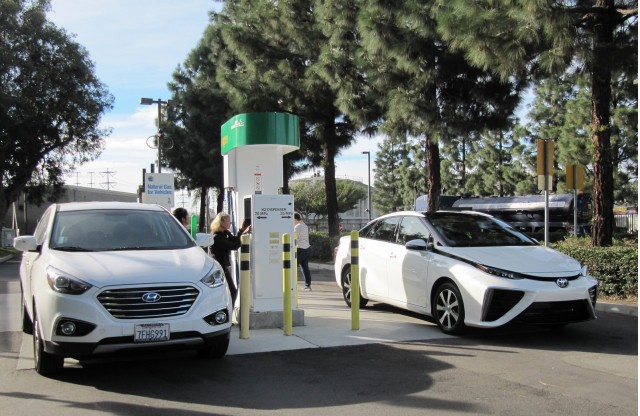
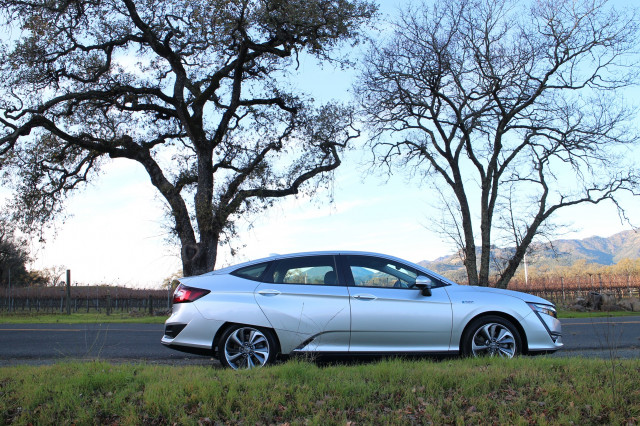
![2011 Chevrolet Volt and 2013 Tesla Model S [photo: David Noland] 2011 Chevrolet Volt and 2013 Tesla Model S [photo: David Noland]](https://images.hgmsites.net/med/2011-chevrolet-volt-and-2013-tesla-model-s-photo-david-noland_100427529_m.jpg)


 A new electric vehicle charging station is seen n ear San Francisco city hall. Will the proliferation of charging stations lead to more electric cars in the West? - Justin Sullivan / Getty Images Embed Code <iframe src="https://www.marketplace.org/2017/12/11/business/electric-car-range-anxiety/popout" frameborder="0" width="100%" height="240px"></iframe>
A new electric vehicle charging station is seen n ear San Francisco city hall. Will the proliferation of charging stations lead to more electric cars in the West? - Justin Sullivan / Getty Images Embed Code <iframe src="https://www.marketplace.org/2017/12/11/business/electric-car-range-anxiety/popout" frameborder="0" width="100%" height="240px"></iframe> 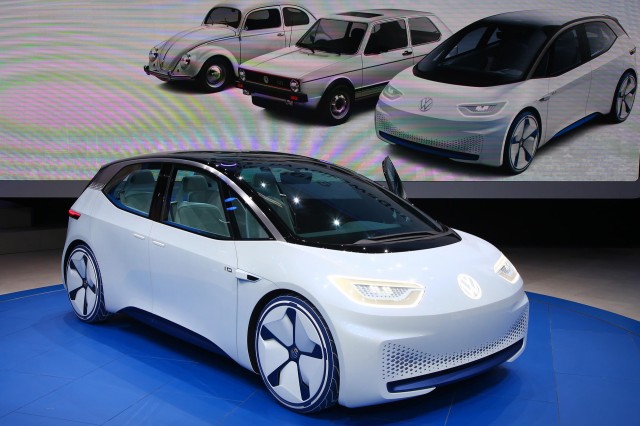
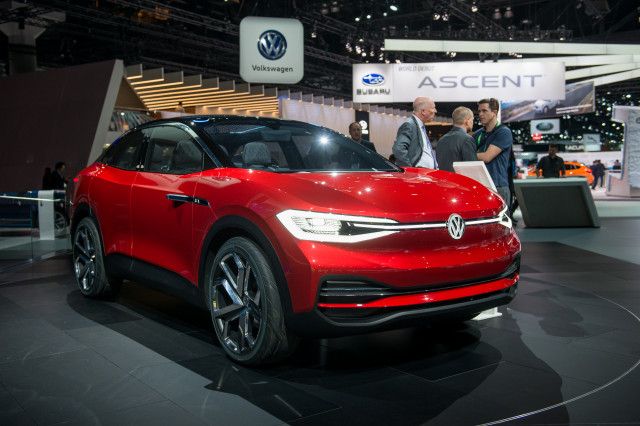
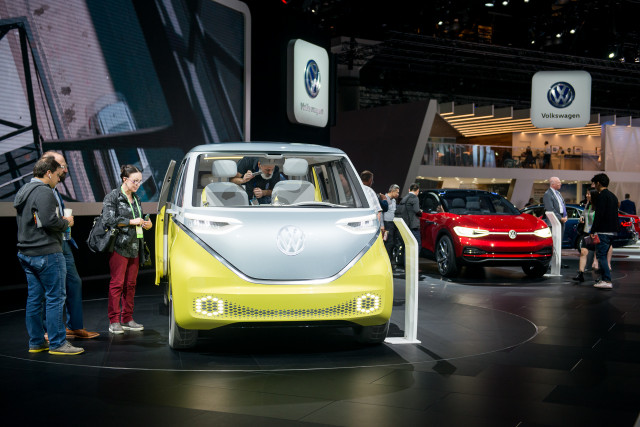
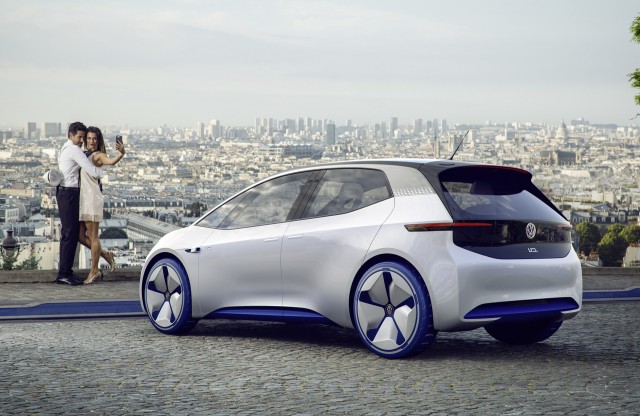

 Ford is making significant investments in the Chinese market. Kamran Jebreili / AP
Ford is making significant investments in the Chinese market. Kamran Jebreili / AP FILE PHOTO: A Tesla Model S electric car is seen at its dealership in SeoulThomson Reuters
FILE PHOTO: A Tesla Model S electric car is seen at its dealership in SeoulThomson Reuters